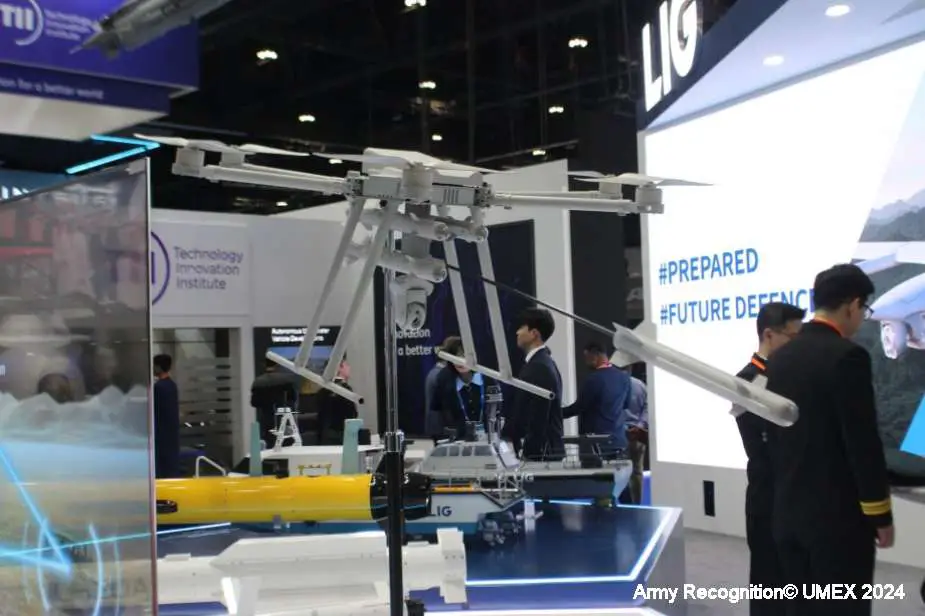Breaking news
UMEX 2024: South Korean company LIG Nex1 presents its Drone-Launched Missile concept.
The South Korean company LIG Nex1 is presenting its innovative 'Drone Launched Missile' concept at UMEX 2024, the prestigious International Unmanned Defense Systems Exhibition, currently taking place in Abu Dhabi, United Arab Emirates, with Army Recognition group as the official media partner.
Follow Army Recognition on Google News at this link

The South Korean company LIG Nex1 presents its drone-launched missile for tactical precision strikes (Picture source: Army Recognition)
The LIG Nex1 is a concept for tactical precision strikes. This concept, primarily designed for small unit teams of the Republic of Korea Army (RoKA), features a compact vertical take-off and landing (VTOL) quadrotor unmanned aerial vehicle (UAV) equipped with a miniaturized targeting pod. The targeting pod is fitted with an imaging infrared (IIR) camera and a laser target designator. However, it has been noted that the pod currently represents a conceptual model.
This UAV is armed with four small missiles, emphasizing tactical flexibility. Additionally, the UAV carries a rack of four miniature missiles, also developed by LIG Nex1. Each missile is equipped with a dual guidance system, incorporating Semi-Active Laser (SAL) and Complementary Metal-Oxide Semiconductor (CMOS) Near-Infrared (NIR) sensors. This advanced dual guidance system allows the missile to accurately home in on its target under various lighting conditions, as explained by the spokesperson.
The missiles are designed to carry warheads weighing less than 1 kg, limiting their usage against light vehicles and personnel. This specification underscores the system's tactical precision nature.
To illustrate the operational concept of this innovative solution, LIG Nex1 has also released a computer-generated animation. In the animation, a light ground vehicle is targeted using the pod's laser designator. The target is also confirmed and marked ('lased') by a ground callsign, such as a forward observer or joint terminal attack controller, demonstrating the system's integration with ground-based operations.


























